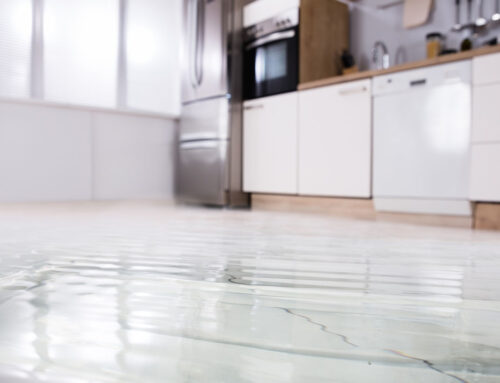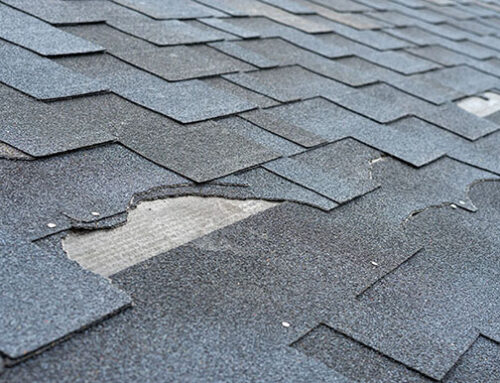When a storm strikes, it can wreak havoc on your property, leaving behind a trail of destruction. From structural damage to water infiltration and mold growth, the aftermath of a storm can be overwhelming. To help you navigate the challenges of storm damage restoration, ESR Disaster Hero presents the ultimate guide, providing crucial steps to an efficient recovery.
To ensure a swift storm damage recovery, follow these steps:
Prioritize your safety
Throughout the storm damage restoration process, your safety should remain a top priority. Before assessing your property damage, follow these safety measures to ensure a secure environment for your family:
Evacuate if necessary:
- If the damage to your property is severe, vacate the premises and seek temporary shelter until it is safe to return after restoration.
Turn off utilities:
- Switch off the electricity, gas, and water supply to prevent further property damage or continued hazardous living conditions.
Beware of structural hazards:
- Avoid entering areas of your property with obvious structural damage, including spaces that have sustained exterior structural and damage.
- Check for weakened walls, floors, and ceilings.
Use protective gear:
- When assessing damage or cleaning up debris, be sure to wear appropriate safety gear, such as gloves, eye protection, a mask, and sturdy footwear for maximum protection.
Assess the property damage
Completing a comprehensive assessment of your property damage is the first crucial step in the storm damage restoration process. This assessment will provide you with insights regarding the extent of the damage and needed remediation efforts. After the storm has passed, take the following steps to evaluate the damage:
Exterior inspection:
- Conduct a thorough inspection of the roof, keeping an eye out for missing or damaged shingles, cracks that might have formed, as well as any signs of potential leaks that could lead to further problems.
- Inspect windows for cracked or shattered glass, resulting in sharp edges that may cause injuries if touched or stepped on.
- Check for damaged gutters or downspouts that could be clogged or broken and inspect the home’s siding for any visible signs of damage caused by the storm’s forces.
- Look for fallen trees or branches as they can cause significant structural damage to the property, and it’s essential to address these issues promptly and safely.
Interior inspection:
- Thoroughly inspect your walls, ceilings, and floors for any signs of water leaks or excess moisture. Even minor water leaks can lead to hidden damage and long-term problems if left unaddressed.
- Carefully assess the electrical systems and all the appliances in your home or property, looking for any potential electrical or structural damage that might have occurred.
- Evaluate the HVAC system for any issues, ensuring that it is functioning efficiently and effectively.
Document everything:
- To expedite your insurance claim process, be sure to take photographs and videos capturing the full effect of your property’s damage.
- In addition to your visual documentation, make detailed notes of the damage to help with the restoration process, ensuring no issue is left overlooked.
Navigating the insurance claims process
Once you have completed the assessment of your property, filing an insurance claim is the next important step in the restoration journey. Follow these steps to help ensure a smooth insurance claim process:
Contact your insurance provider promptly:
- Report the damage done to your property as soon as possible.
- Provide your insurance company with the documentation and visual evidence you collected during the assessment process.
Familiarize yourself with homeowners insurance basics:
- Review your insurance policy to know what damage is covered and what falls under your own responsibility.
- Check the details of your policy, including the deductible, policy limits, and exclusions. If you have questions about the fine print, contact your provider for more information.
Get multiple quotes for repairs:
- Obtain estimates from reputable disaster restoration companies, like ESR Disaster Hero, to present to your insurance provider.
- Ensure that the quotes you receive are detailed and comprehensive. If you need to make multiple repairs, itemize each repair and associated costs.
Communicate clearly and document everything:
- Keep a record of all communication with your insurance company, including any email exchanges and phone conversations.
- Stay organized with paperwork, emails, and phone calls.
Choose the right partner
Selecting a reliable and experienced disaster restoration company for your storm damage remediation is vital for a swift and successful recovery. Consider the following factors when choosing a restoration service partner:
Reputation and reviews:
- Research the company’s online reviews and testimonials from previous clients.
- Check their website and social media profiles for feedback and ratings. Google My Business and Facebook reviews are great places to start.
Certifications and expertise:
- Ensure the restoration company is certified and licensed to handle storm damage.
- Look for companies with extensive experience in storm damage restoration.
Response time and availability:
- In the aftermath of a storm, quick action is important. Choose a local company in your region that offers emergency restoration services.
- If there is a wide-spread need in your community, confirm that the restoration company can promptly assess your property and start the restoration process.
Comprehensive services:
- Search for a restoration company that offers a wide range of services, including water damage restoration, roof repairs, and mold remediation and prevention.
Dealing with property damage after a storm can be daunting, but with the right approach and assistance from ESR Disaster Hero professionals, a swift recovery is achievable. By following these steps—including prioritizing your safety, assessing property damage, working with your insurance company, and finding reputable restoration services—you’ll be well-prepared to tackle any challenge that comes your way.
Remember that storm damage restoration requires prompt action and the involvement of skilled experts. Be sure to contact ESR Disaster Hero immediately to initiate the restoration process and bring your property back to its pre-storm condition.


